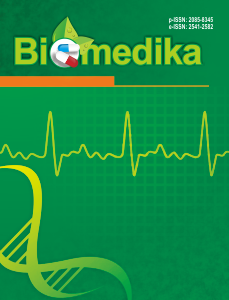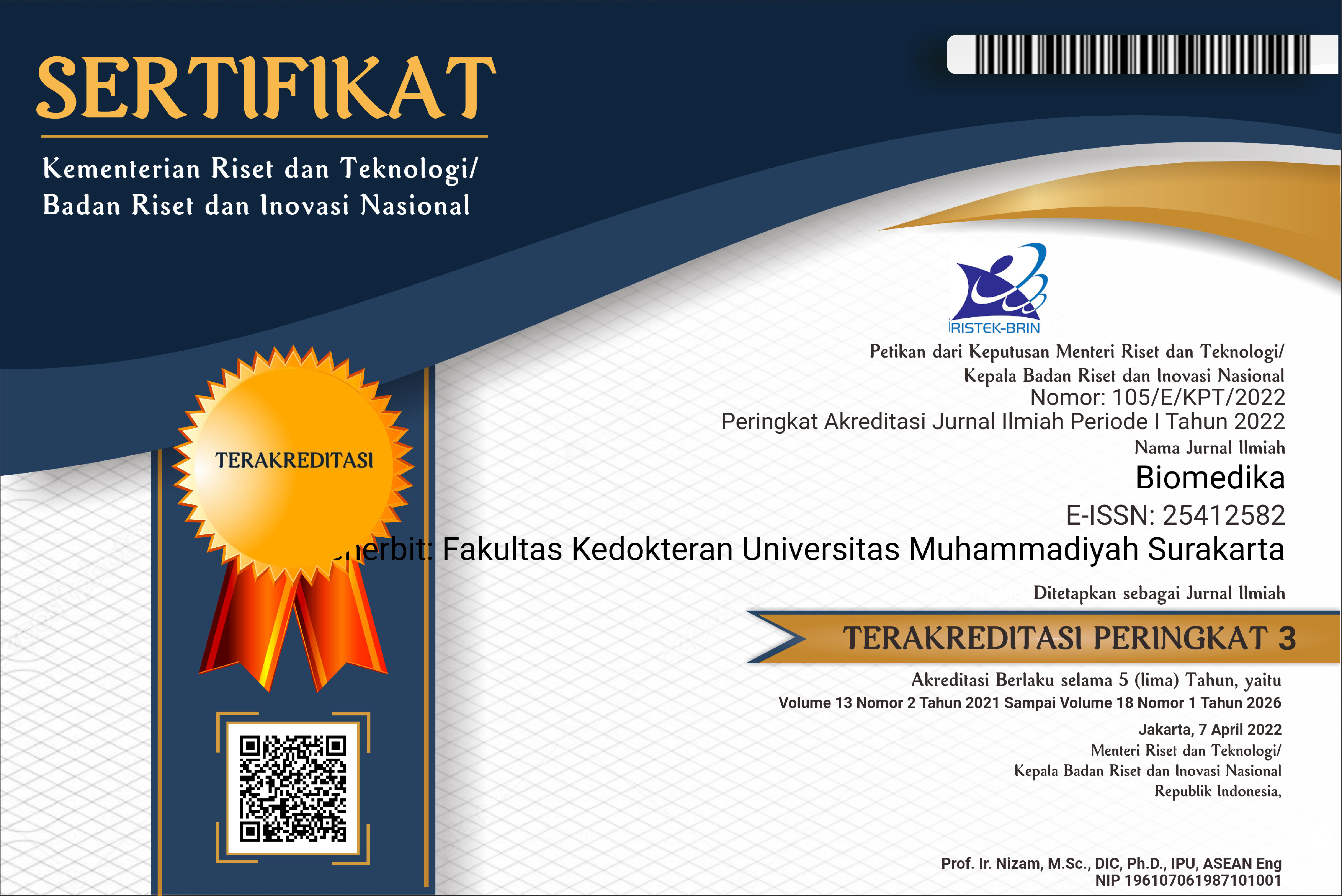Antibacterial Activity of Aqueous Extract Combination of Garlic (Allium sativum) and Red Ginger (Zingiber officinale var. Rubrum) Against Staphylococcus aureus
DOI:
https://doi.org/10.23917/biomedika.v17i1.7033Keywords:
Garlic, Red Ginger, Aqueous extract, Antibacterial, Staphylococcus aureusAbstract
Background: Irrational use of antibiotics can increase the resistance, so it is necessary to find alternative solutions by using herbals that have antibacterial activity, such as garlic which contains allicin, alliin, and sulfide derivatives, and red ginger which contains gingerol, flavonoids, and phenols. For traditional use, garlic and red ginger need to be extracted with aqueous solvents. Objective: Proving the antibacterial activity of the combination of garlic extract (Allium sativum) and red ginger extract (Zingiber officinale var. Rubrum) with aqueous solvents against Staphylococcus aureus. Methods: Each garlic extract and red ginger extract were made by the kinetic maceration with aqueous solvents, then mixed in a ratio of 1:1, 1:2, and 2:1. Results: The combination of garlic and red ginger extracts has strong antibacterial activity to inhibit the growth of Staphylococcus aureus. The average diameter of the inhibition zone at a ratio of 1:1, 1:2, and 2:1 was 30.40 mm, 24.51 mm, and 37.67 mm, respectively. The ANOVA test showed a P value of 0.000. Conclusion: The combination of garlic extract (Allium sativum) and red ginger extract (Zingiber officinale var. Rubrum) with aqueous solvent has strong antibacterial activity against Staphylococcus aureus, with the strongest combination at a ratio of 2:1.
Downloads
Downloads
Submitted
Accepted
Published
Issue
Section
License
Copyright (c) 2025 Biomedika

This work is licensed under a Creative Commons Attribution 4.0 International License.












